In molecules, one chemist sees art
Grad student So Young Lee has long been a choreographer, baker, and painter. In the lab, she applies her creativity to molecule design.
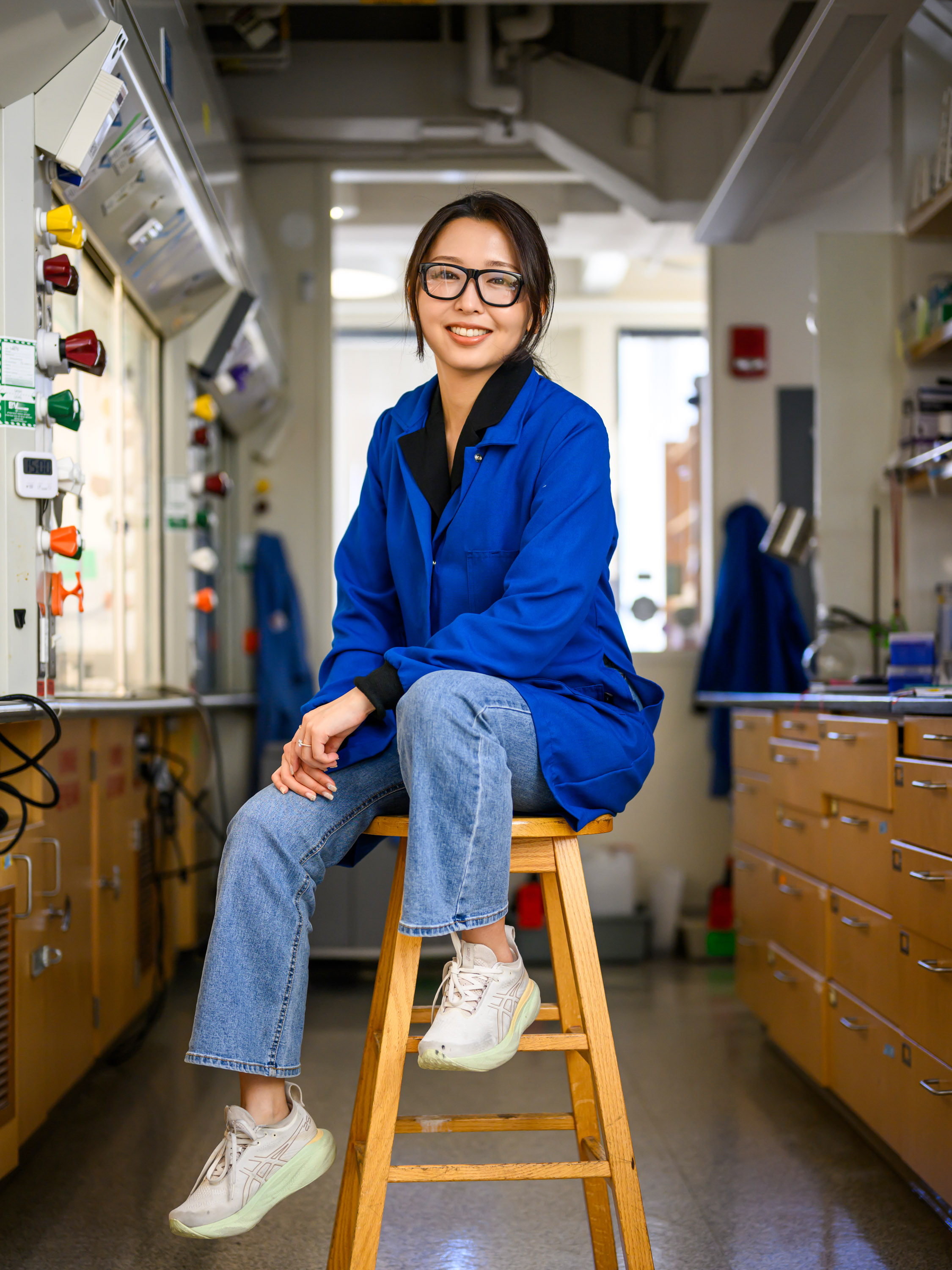
One Tuesday morning this past January, So Young Lee walked into a lab on the fourth floor of Building 18 and discovered that her equipment had exploded. It was a minor explosion—thankfully, no one was hurt—but the chemical she had painstakingly made had splattered all over the walls, the ceiling, and the broken shards of the glass tube that once contained it.
This incident would cost her time and precious product—and she didn’t have the time to lose. Lee, a fourth-year PhD student in chemical biology, was partway through a three-week, 11-step process to synthesize a chemical she helped design: azido-(Z,Z)-farnesyl phosphoryl-ß-D-mannose, or AzFPM for short.
Meant to help combat the tuberculosis bacterium, which kills more people each year than any other pathogen, AzFPM is the first molecule to target a specific carbohydrate in the bacterium’s cell wall that helps it evade the immune system. The molecule is designed to sneak inside tuberculosis, potentially offering scientists and pharmaceutical companies a new tool for studying the pathogen at a time when it is steadily gaining antibacterial resistance.
But making AzFPM isn’t easy. Producing just a few milligrams takes weeks of patiently heating, purifying, and combining chemicals at just the right ratios and timing. So when Lee saw that a vacuum suction machine with a hairline crack had sent her invention flying, she put on PPE, stood on a stool, and began mopping up every last drop with a paper towel.
“I’ve wiped the floor before,” she jokes, “but I’ve never wiped the ceiling.”
After giving what she’d managed to salvage a good wash with methanol, two rounds of filtering, and a purification for good measure, she moved on to the next step, using just half the product she would have had sans explosion.
For Lee, designing molecules is a logical extension of her creative side. Growing up in South Korea, she was doing calligraphy at age 10 and choreographing K-pop dances at age 15. In her early 20s, she began oil painting, designing intricate nail art, and baking cakes and macarons for her friends.
She first became intrigued with the idea of creating molecules while attending the selective Seoul Science High School. A teacher told her class about synthetic organic chemistry, a field focused on designing novel, complex compounds, and Lee was hooked. “He was just talking about the beauty of designing molecules and ways to synthesize them,” she says. “That really caught my attention.”
This new interest led Lee across the world, to Stanford University. There she spent her undergrad years balancing difficult coursework and long hours synthesizing analogues of HIV drugs in an organic chemistry lab with waking up at 4:30 a.m. to film dance videos with her school’s K-pop group (a hobby through which she would meet her husband). In her sparse spare time, she learned new languages, becoming proficient in Italian and Mandarin on top of being fluent in Korean and English.
“I like to think of [organic chemistry] as a language,” Lee says. If you rely on memorization, “you know all the words and grammar, seemingly, but you can’t speak the language.” In other words, though she knows a vocabulary of chemicals and the “grammar” of how they react, it still took her time and practice to put everything together to form new molecules.
In 2020, when she came to MIT for graduate school, Lee spent a virtual lab rotation with Laura Kiessling ’83, a chemist who helped pioneer the field of chemical biology. Unlike biochemistry, which is the study of the chemistry behind biological systems, chemical biology involves applying chemical tools to probe and manipulate biological systems, Lee explains.
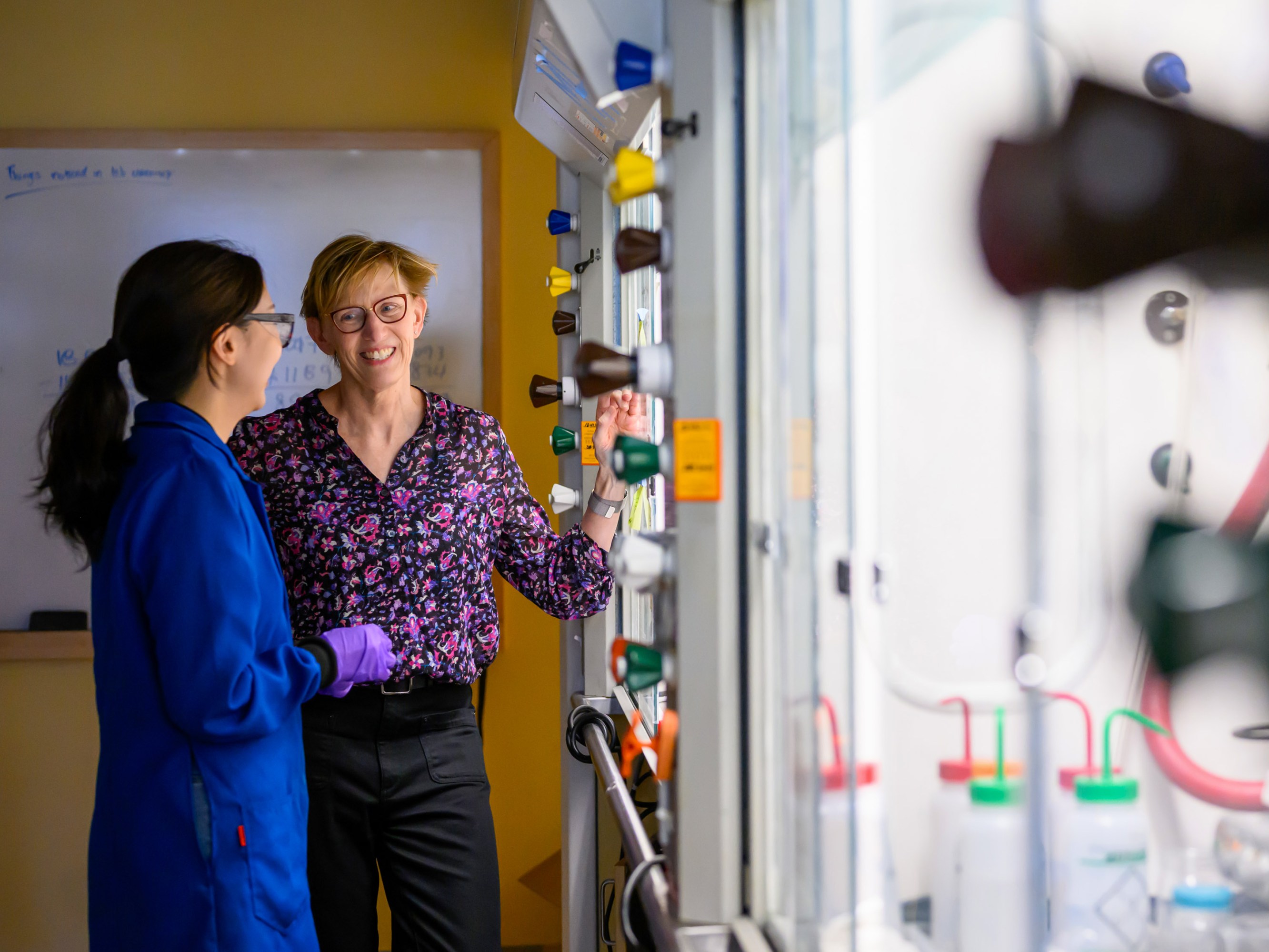
Chemistry department students and advisors rank each other in a matching process to determine which labs students join. Lee was thrilled to match into Kiessling’s lab, her top choice. Beyond being drawn to the creative possibilities of the field, she was also excited to be part of a lab made up mostly of women and people of color.
When Kiessling recalls the matchmaking process, she says that Lee had an impressive synthetic chemistry background as well as an interest in working on biological systems. More than that, Kiessling was looking for what she calls “open-minded people willing to try crazy things.”
In her lab, everyone studies glycans—chains of sugar molecules that coat the outside of all living cells. Glycans are one of the main research subjects for scientists studying Mycobacterium tuberculosis, the tuberculosis-causing pathogen, which lives in a quarter of the global population. Its thick, glycan-filled cell wall dampens the body’s usual immune response, allowing the bacterium to go undetected. As a result, people can live years without knowing they’re infected—until tuberculosis launches a devastating attack on the body. The disease causes as many as 1.5 million deaths per year.
Today, most patients are given a “cocktail” of drugs targeting different aspects of the bacterium. But it’s becoming increasingly resistant to existing antibiotics, and designing new drugs is a public health priority. Lee’s work targeting M. tuberculosis’s distinct cell wall could be one key avenue to finding an effective treatment.
When Lee sets to work producing her molecule, she moves around the lab swiftly and decisively—pouring liquids into giant beakers, pulling out a flame torch to evaporate excess moisture that threatens her reactions, and taking measurements with an assortment of the lab’s precisely calibrated instruments. She is following steps that she devised three years ago, when she started trying to figure out how to alter an existing tuberculosis-targeting chemical so that it could breach cell walls like a Trojan horse and reveal details about the sugars within. M. tuberculosis absorbs different kinds of sugars for different purposes. Lee wanted to zero in specifically on mannose-containing glycans, which the bacterium uses to build its cell wall. If Lee could see how it incorporates those glycans into its structure, that could help researchers develop new drugs that disrupt the building process and thus kill the cell. But Lee needed to hit a sweet spot when designing her molecule. It had to be complex enough to fool the tuberculosis bacterium into incorporating it just as it would incorporate mannose-containing glycans, yet simple enough to be made repeatedly in the lab. If the synthetic glycan were too generic, tuberculosis would use it for multiple functions, making it impossible to target the cell-wall-building process she’s studying.
Designing the synthetic route to producing the molecule took a year of troubleshooting—what Lee calls “part of the art.” After much trial and error, she figured out how to optimize the synthesis, running multiple stages at once since some take minutes and others last days. Lee estimates that she’s done the full synthesis around 30 times.
The final tuberculosis-targeting chemical, AzFPM, consists of synthetic sugars mimicking mannose-containing glycans. It’s so close in structure to these glycans that the bacterium incorporates it into the cell wall without noticing.
Lee works with model organisms that are much less dangerous than M. tuberculosis, including M. smegmatis, which is genetically similar to the real pathogen, as well as C. glutamicum, a rod-shaped bacterium that helps with visualization. Though she found success with her C. glutamicum model, she relied on a colleague in the lab who is specifically trained to work with biosafety hazards for testing it in M. tuberculosis.
To know if the molecule worked, Lee and her colleague had to track how M. tuberculosis used AzFPM. The molecule has a chemical handle, upon which Lee used a process called click chemistry (which won its inventors a Nobel Prize in 2022) to attach other molecules that fluoresce under certain lights. When she saw that the bacteria treated with her molecule glowed more than the nontreated bacteria, she knew that her molecule had successfully made its way into the cell wall.
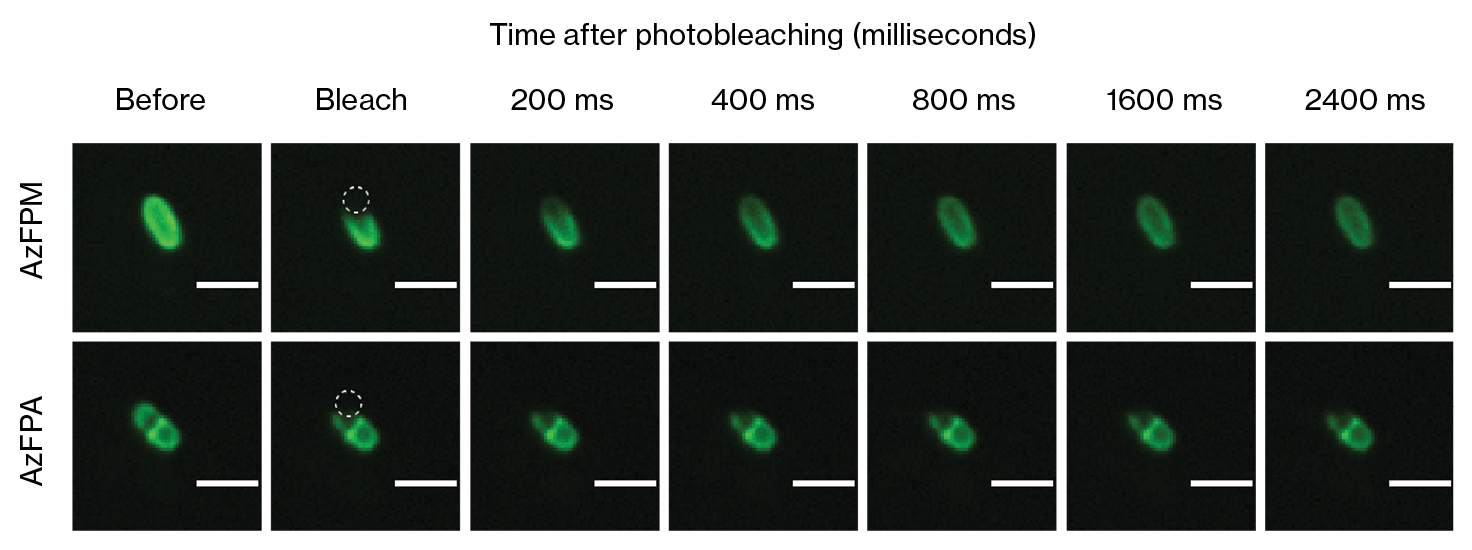
Lee and her collaborators are the first to track and photograph mannose-containing glycans in the tuberculosis cell wall. It’s a meaningful achievement: Visualizing how the bacterium uses such glycans might lead to new drugs that target and, ideally, dismantle those mechanisms, harming the pathogen and helping the patient.
Visualizing specific glycans in the tuberculosis cell wall has historically been difficult because, while amino acids and proteins have unique chemical structures, those of all sugars are nearly identical. Bacteria use more than 600 different kinds of sugars, and many differ not in their composition but in the 3D orientation of their atoms.
“The molecules that she made and the way that she came up with the routes are really elegant,” says Kiessling, adding that existing antibiotics do not target mannose-containing glycans: “They’re hard molecules to make.”
As a synthetic chemist, Lee says, her job isn’t just to study what her new molecule reveals; it’s also to make enough of it for others to use in biological studies (at least one other MIT lab is already interested). Since publishing her results last year in the Journal of the American Chemical Society, Lee has focused on scaling up production from about 5 milligrams to 50—a 20th the weight of a dollar bill—in each synthesis cycle.
“Synthesis fails constantly,” says Leah Pauline Weisburn, Lee’s former roommate and an MIT graduate student in theoretical chemistry. “It’s a lot of trial and error, and you just have to be resilient.”
Resilience is a common thread for Lee, who’s had to conduct some of her hardest syntheses while recovering from surgery following a hiking injury last year. It was also a theme in her work as MIT’s Women+ in Chemistry mentorship and outreach chair, a position she took on in addition to mentoring students from underrepresented backgrounds in science as part of the MIT Summer Research Program in 2022 and 2023.
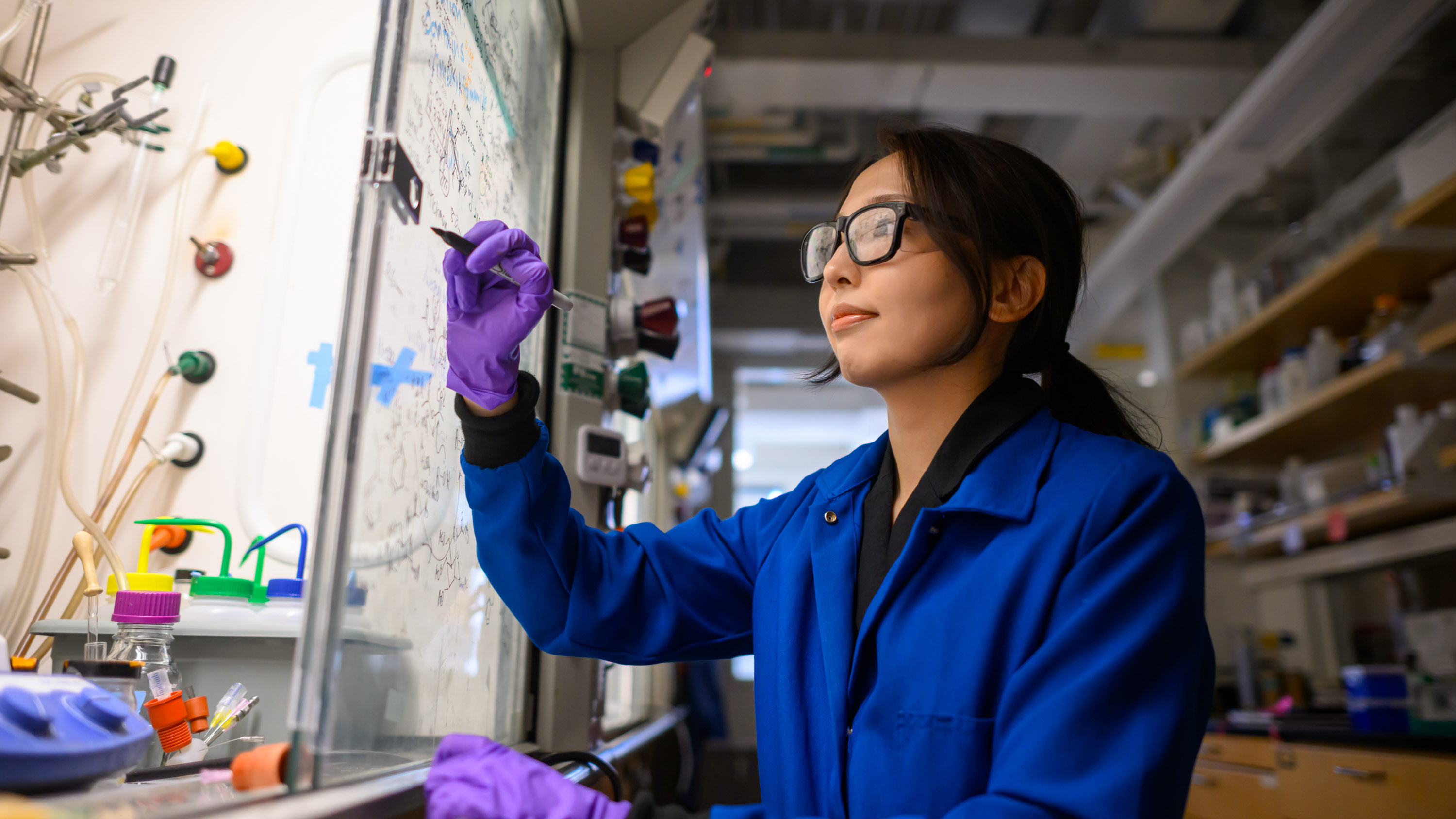
Much of Lee’s passion for mentoring comes from her own challenging experiences. Early in college, she joined a lab where she felt she got inadequate guidance and support, which limited her ability to learn and ask questions. Worse, she didn’t realize there were people in the lab she could turn to for help. Eventually, she worked up the courage to switch labs and found a new community with guiding figures who had created an environment where she could not only learn but thrive. Now, Lee encourages her mentees to lean on departmental resources, other students in the lab, and her.
“I try to find that balance between holding their hand but also letting them grow as an independent researcher,” she says. She has found that sharing her own experiences builds trust and camaraderie between herself and her mentees.
When giving talks to K–12 girls about chemistry, Lee makes sure to share her passion for art as well as science. She also emphasizes that “people that look like you and like the things that you do can also be scientists.”
Her attitude has impressed Kiessling, who recalls an organic chemistry retreat where Lee mentioned her love of nail art when asked to share a fun personal fact. “A few years ago, people wouldn’t want to admit that they cared about their appearance, much less their nails,” says Kiessling, who points out that organic chemistry is a historically male-dominated field. To her, Lee’s pride in her hobbies doesn’t just reveal her artistic side but also signals a shift toward more inclusivity in chemistry—a shift that she says strengthens the science being done.
Today, Lee is looking ahead to her dissertation. While she’s not sure whether she’ll land in academia, the pharmaceutical industry, or biotechnology after MIT, she knows her creativity will lead her in a direction where she can continue to grow.
“There’s an art to organic chemistry,” she says, “and that’s why I still do it.”
Keep Reading
Most Popular
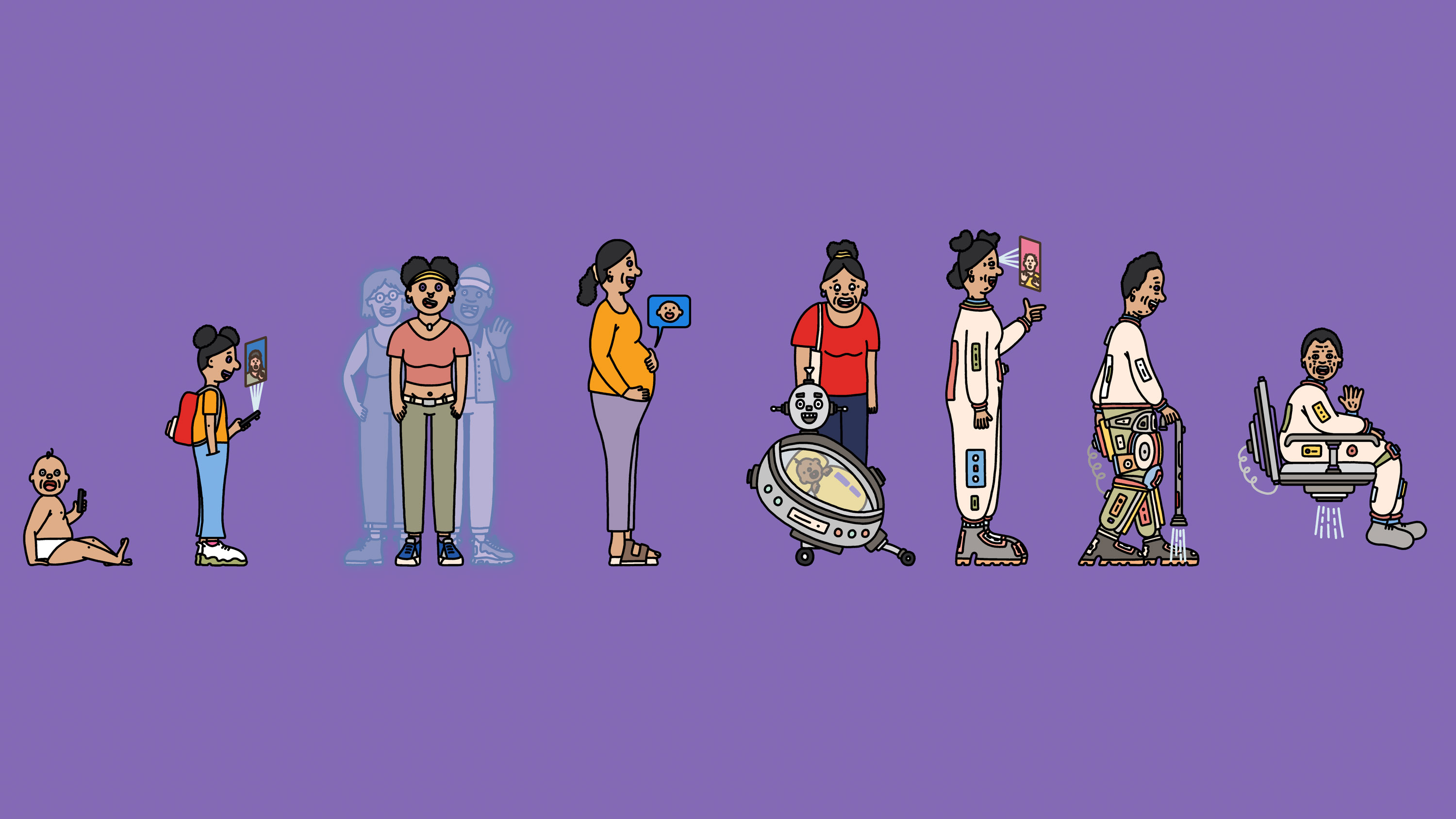
Happy birthday, baby! What the future holds for those born today
An intelligent digital agent could be a companion for life—and other predictions for the next 125 years.

This researcher wants to replace your brain, little by little
The US government just hired a researcher who thinks we can beat aging with fresh cloned bodies and brain updates.

Here’s how people are actually using AI
Something peculiar and slightly unexpected has happened: people have started forming relationships with AI systems.
Stay connected
Get the latest updates from
MIT Technology Review
Discover special offers, top stories, upcoming events, and more.
